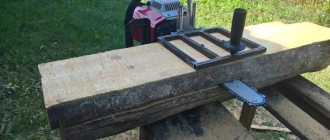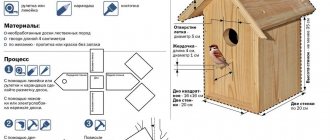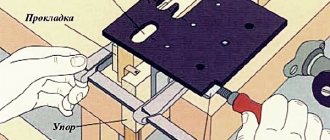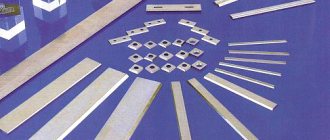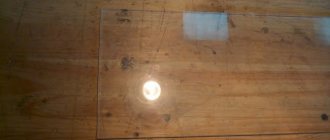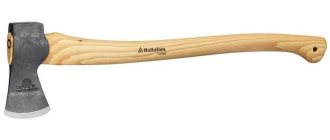Power tools are widely used in construction. Craftsmen often use a jigsaw to cut various materials. Let's find out how professionals can cut smoothly with a jigsaw. Read on and learn the intricacies of the process, including the features of cutting wood, metal, plastic, tile, laminate or chipboard. We will also tell you about the auxiliary devices used and how preparation is carried out before work.
Wooden, plastic, and metal building materials sawn with a jigsaw Source gama-alati.rs
Rating of the best electric jigsaws
| Place | Model | ||
| 1. | Makita 4329 450 W | Prices | Review |
| 2. | BOSCH PST 700 E 500 W | Prices | Review |
| 3. | BISON L-400 400 W | Prices | Review |
| 4. | Interskol MP-85/700E 700 W | Prices | Review |
| 5. | VORTEX LE-65 650 W | Prices | Review |
How to work with a jigsaw: features and rules
The electric jigsaw cuts unevenly. There is no need to rush and use force here. It is better to cut slowly and press the tool lightly against the material.
When working with a jigsaw, you should follow the rules
There is a small educational program on how to cut with a jigsaw exactly in a straight line, and so that the blade does not slip:
- While sawing you need to keep an eye on the file . As soon as it becomes a little dull, it should be replaced. When the file is dull, it moves away and chips appear.
- It is necessary to ensure that the file does not overheat , otherwise the teeth will quickly become unusable.
- Each type of file is designed for a specific material .
- The power of a tool directly affects its performance . The higher the power, the more different materials it can cut.
- Dense materials (countertops, laminate) can be sawed with a file with large teeth . Fiberboard and plywood are easy to cut with a fine-tooth saw .
- For a more even cut, you can use appropriate devices - stops or guide rails .
Any material can serve as a guide. The main thing is that it has a smooth edge and the ability to correctly align and fix it.
Straight cutting using a rip fence
Many jigsaws are sold with a rip fence. Such models are often chosen by professionals. It is possible to make a high-quality cut when using a rip fence if:
- material with a flat surface is cut, since the shoe should move only along such a plane;
- Only a high-quality jigsaw is used, which does not move to the side during operation;
- a rigid and durable additional device is used;
- the shoe is pressed tightly against the surface of the material being cut.
Even if a specialist uses a jigsaw, the kit of which did not initially include a rip fence, he will always be able to use it, since there is a slot in the sole of each such tool. It is this that allows you to attach the rod of an additional device.
How to make a perfect cut with a jigsaw
To get a correct, beautiful and straight cut, you need to follow the following recommendations.
Selection of cutting blade
For shaped and fine work, it is better to take thin files . If you need to make a complex pattern, you need to use files with 2 cutting edges . The leading edge guides the main cut, and the rear edge makes the saw maneuverable, preventing scraps.
Fastening material
Many people neglect such a simple rule as fastening the material. It's one thing when the structure itself is bulky . There is no need to pin anything here. But if you need to cut, for example, a sheet of plywood, you can’t do without fasteners. The material is light and without fixation you can ruin everything.
Ensuring a clean cut
In many cases of material processing, the size of chips can be reduced to half a millimeter. Such minor imperfections are not noticeable; they can be removed by chamfering with sandpaper or covering up the chips with a correction pencil. You can also sand the end with sandpaper or cut through the top layer of the surface with a utility knife.
To begin, make 2 cuts half a millimeter deep on both sides of the part, indicating the thickness. Two grooves should be marked along the edges of the cut, which can be done using an oblique shoemaker or segment knife (for uncoated wood material or chipboard), or using a sharp drill and a pobedite cutter (for laminate).
Why can a jigsaw cut crookedly?
Not everyone knows how to saw off a workpiece smoothly with a jigsaw. The tool is light and without sufficient skill, the entire cut can go crooked .
Why does this happen:
- No experience with the tool.
- Saw blade with defects.
- Play in the guide roller. There may be 2 reasons: wear of the internal part and failure of the mounting holes.
- Rod wear. With such a malfunction, a large backlash occurs.
These are the most basic faults. There may be others, so you need to take all points into account.
Various methods are used to obtain an accurate cut.
Application of adhesive tapes
Adhesive tape (for example, ordinary tape) is used to protect the back side of the material. It is necessary to glue a tape to the cut line to protect the processed fabric from tearing off large elements. Masking tape cannot be called a very effective option for preserving material when cutting with a jigsaw, since its strength indicator is extremely low.
A fairly wide (each side of the cut material should be covered by at least fifteen centimeters) aluminum or fiberglass reinforced tape is best suited. In addition, the adhesive tape must be pressed with a dry cloth to eliminate the risk of wrinkles.
What to do if you have problems with accuracy
Below we will look at how to cut smoothly with a jigsaw and get an accurate cut.
Sawing with a saw table
Often you have to cut out round or oval elements . You can't do without a saw table. On the underside of the tabletop you need to secure the jigsaw with the file facing upwards. Secure the start and stop buttons to the side. All that remains is to move the material in the right direction.
Sawing with a guide bar
The tire looks like a long ruler 1.3-1.5 meters . A groove is made in it and the jigsaw moves along it. The file must be adjusted along the cutting line, and the tire must be secured with a clamp. When sawing, the tool should be guided strictly along the tire.
Straight cutting using a guide bar
First, experienced craftsmen place the workpiece on the work table. Then the jigsaw is installed in a special shoe. Then the tool with an additional device is placed in the tire. Next, position the file along the markings. After this, fix the tire and turn on the jigsaw, which is moved along the guide. In this case, the master does not make any great efforts. He only needs to move the tool, which is equipped with an exceptionally high-quality cutting blade. Otherwise, you won't be able to make an even cut.
General cutting principles
To know how to cut smoothly with a jigsaw, there are several generally accepted rules.
How to cut wood, chipboard, plywood
To saw wood and its analogues (chipboard, plywood, fibreboard, laminate, chipboard), you need to use saw blades with a pitch of 3-4 mm and a maximum stroke frequency . The jigsaw should be moved slowly, pressing against the workpiece. If the cut is made quickly, then a pendulum stroke of the saw blade is used.
How to cut ceramics, porcelain tiles
When working with such materials, the tool should never be pushed. For ceramics, blades made of hard alloys of a certain length are suitable; for porcelain stoneware, diamond blades .
How to cut metal
For such purposes, use a fine-toothed file with a pitch of 1-2 mm , with a low stroke rate and without a pendulum. When working, only smooth movements, without pressing on the tool.
How to cut plexiglass, plastic
To saw off this type of material, use a file with a fine tooth . Provided that the pendulum stroke should be set to the minimum value.
Choosing the right tool
A few recommendations from experienced professionals will help you choose the right tool for the job.
For cutting at home, a household or semi-professional D-shaped jigsaw, which can be operated with one hand, is sufficient. The more power, the heavier the jigsaw, and it will be more difficult for it to cut smoothly.
A step speed controller, an electronic stabilizer and a pendulum stroke will greatly facilitate the cutting process. The presence of a plastic pad on the sole will allow you to securely secure the machine to the cutting blade. Useful features include built-in airflow and lighting.
It is worth paying attention to the fastening of the canvas. Some models have a restriction that does not allow the use of any file.
It is not recommended to cut boards with a jigsaw; there are circular saws and hacksaws for this. Although a powerful tool can cope with the task, it is unlikely that it will be possible to achieve a perfectly even cut.
Each jigsaw model differs in shape, so before purchasing it is worth holding the tool in your hand, and, if possible, testing it directly in the store.
Features of cutting round and oval elements
Before cutting out a circle or oval, you need to mark the workpiece . A hole slightly larger than the saw blade is drilled in the material. For elements with curved lines, a narrow file will be required. The cutting process should be slow.
If you need a circle of the correct shape, then use a circle cutter . A stop (compass) is fixed in the center of the circle and cut with a narrow blade. Here it is advisable to focus on the file itself.
There is no need to drill a hole in the material . The jigsaw must be installed behind the marking line, always with the edge of the sole. The angle should be increased until the workpiece is cut through. Then the jigsaw should be stopped, the file removed and returned to its normal position. You need to reach the marking line gradually, slightly rounding the cut. Having learned these simple tips, it will be clear how to cut an even circle with a jigsaw.
Before cutting complex workpieces, be sure to make markings
Reasons for chipping
If you observe the process of chipping, you can discover a pattern: when sawing from top to bottom, the teeth of the file do not saw through the material and do not form chips as they come out of it. When the process proceeds from bottom to top, the teeth catch and form kinks.
In a wooden material, fibers located in the vicinity are caught, and in laminated chipboard, the coating and chips are caught.
If you try to saw two layers of laminated chipboard at the same time, the layer located below will be sawn efficiently, since the layer on top prevented the formation of chips. Important!
An increase in processing accuracy will be provided by the “Soft Start” option, in which the jigsaw gradually picks up speed, and the cut itself proceeds as expected. Move the tool slowly. It is necessary to continuously visually monitor the position of the cutting point and marking.
Mistakes when working with a jigsaw
If you don't have the skills to use the tool, the result can be disappointing. Curves and chipped cuts can occur if the material is not fixed correctly . Rapid movement of the jigsaw, jerking during work - all this will lead to defective work.
Hoping to save money, many people use homemade tools . The benefit is cheap, but the result will be sad. It's better to give up this idea. A tool that is too heavy will also have a negative impact on your work. Your hands will quickly get tired from tension and this will affect the quality of the cut.
